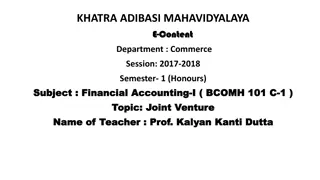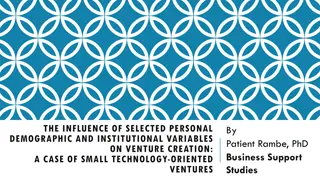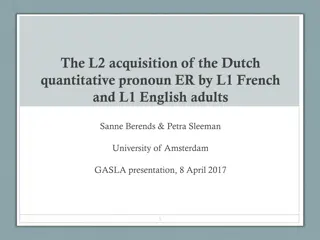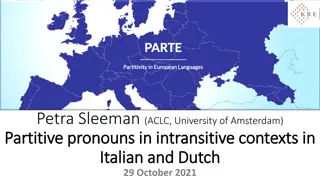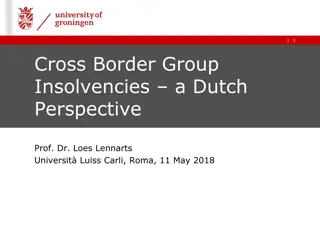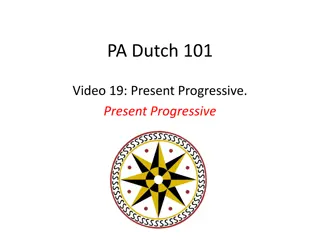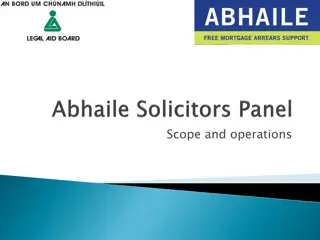Legal-Financial Case Study: Rembrandt's Business Ventures in the Dutch Golden Age
Legal and financial analysis of Rembrandt's business dealings in 17th century Holland, examining legal disputes, agreements, investments, and societal context. The study focuses on interpreting available evidence within the framework of historical law and societal developments, shedding light on Rembrandt's entrepreneurial activities without delving into traditional art historical themes.
Download Presentation

Please find below an Image/Link to download the presentation.
The content on the website is provided AS IS for your information and personal use only. It may not be sold, licensed, or shared on other websites without obtaining consent from the author. Download presentation by click this link. If you encounter any issues during the download, it is possible that the publisher has removed the file from their server.
E N D
Presentation Transcript
Rijksmuseum: The Musketeers of District II led by captain Frans Banninck Cocq, known as the Night Watch ( Schutters van wijk II onder leiding van kapitein Frans Banninck Cocq, bekend als de Nachtwacht ), 1642
Archives: No diary; no personal archives; incomplete public archives Paper trail: approx. 150 individual documents in archives (courts, tax registers, notarial archives in Leiden, The Hague, Leeuwarden and Amsterdam) Legal acts, around 80: agreements, receipts, wills of parents, Saskia, Titus; buying/selling plot of land, loans/investments Legal disputes, approx. 25 legal conflicts/battles of all kinds, with patrons (quality of work; sharp business practices/prices), with neighbor (re costs of reconstruction house), panic loans , not paying rent for auction room, transfer of house to detriment of creditors , arbitration, insolvency proceedings, company between Hendrickje and Titus, rent arrears for his last house
A legal-financial case study interpreting situations for which direct evidence is available, in light of the applicable law in those days in Holland . Presented with insights in the societal developments in this stage in the development of the Netherlands today (political, religion, migration/demography, trade, culture, growing of city-state Amsterdam) What I do not cover 1 No 'new facts', rather another look at Rembrandt as an entrepreneur and businessman, explaining and discussing these aspects, attaching interpretations to them where possible 2 Case study, consulting mostly compilations of primary sources Rembrandt Documents (Strauss/Van der Meulen 1979) Hofstede de Groot ( Urkunden 1906) 3Not the 'dark side' of the Dutch Golden Age 4No illustrations, no iconography, no 'psychological analysis' of Rembrandt
Rembrandus, with underneath: * 14 15 Hermanni bij sijn ouders
Dr. Stephanie Dickey, in: CODART September 2021: By the time Rembrandt was in his mid-twenties, he had established a thriving art practice in Leiden, as displayed recently in Young Rembrandt: Rising Star. He could surely have remained there and built a career as one of his hometown s leading artists. Yet, around 1632, he chose to relocate to Amsterdam, the commercial hub of the nascent Dutch Republic. Bikker (2019): In short, Leiden was no place for an up and coming start like Rembrandt. It was time to move on Blom (2019): he was ready
- Artist in rather small houses of his parents; no room for 'large size' commissions - His contemporary Jan Lievens had large Leiden clients, Rembrandt just had a few - Rembrandt had Remonstrant protectors; Leiden was fiercely against 'Arminianism - Leiden: poor market conditions; he charged high fees - In 1628 R starts etching (no previous training); his paintings didn t sell? - In Leiden no St Luke's guild, so no protection against outsiders, but also no 'quality benchmark - Early 1630s: several painters left Leiden, including De Heem (Antwerp), Lievens (London) and Jan van Goyen (The Hague) - Father died in 1930; family were millers or backers; no personal reason to stay
document/remdoc/e4393 [Summary] Today, on 20 June 1631, appeared before me, Geerloff Jellisz Selden, public notary ... [mr.] Henrick Ulenburch, art dealer, and confirmed that he owes Rembrant Harmensz, a resident of Leiden, or any subsequent holder of the title, the sum of 1000 guilders lent to the aformentioned Henrick Ulenburch by the above-mentioned Rembrant. In case the aformentioned Rembrant demands to be repaid within the period of one year, he must give the aformentioned Ulenburch notice three months in advance.
Op huyden den 20 Juny 1631 compareerde voor mij Geerloff Jellisz Selden, openbaer notaris Henrick Ulenburch, cunsthandelaer, ende bekende wel ende deuchdelijck schuldich te wesen aen Rembrant Harmensz wonende tot Leyden, off den toonder deses, de som van tienhondert guldens ter cause van geleende penningen bij den voorsz. [Henrick Ulenburch] van den voorn. Rembrant , tot zijn contentement ontfangen, welverstaende off den voorz. Rembrant de voorn. som over een jaer begeerde affgedaen te hebben, dat hij alsdan gehouden zal zijn, den voorn. [Henrick Ulenburch] drie maenden voor den tijt daervan te waerschouwen, mits jaerlijcks vijff ten hondert voor interest betalende. Hier vooren bij fante van betalinge verbindende alle zijn goederen geen uytgesondert. Sonder arch ende list. Aldus gedaen binnen Amsterdam voors. ten dage maende ende jare voorn. ter presentie van Tjerck Remers ende Jan van dey getugen
It could, hypothetically, also reflect (i)the payment for the use of a location in the studio to work, or (ii)a tacid partial pre-payment reflecting an oral agreement (compare the use in the 21st century of a side-letter ) between Rembrandt and Hendrick that the former would acquire an exclusive position in Hendrick s studio (without others knowing it), or (iii)payment for the assurance to Rembrandt he would receive a certain number of assignments, or (iv)representing a contribution (in capital) brought into a partnership ( firma ) against Hendrick s non-cash contribution in work and diligence ( arbeid en vlijt ).
Onderschrift: dit is naer mijn huijsvrou geconterfeijt do sij 21 jaer oudt was den derden dach als wij getroudt waeren, den 8 Junijus 1633 Caption: this is my wife, portrayed when she was 21 years old the third day that we were married, the 8th of June 1633
Knottekistje (Zuiderzeemuseum) Wedding casket
Rijksmuseum: The Musketeers of District II led by captain Frans Banninck Cocq, known as the Night Watch ( Schutters van wijk II onder leiding van kapitein Frans Banninck Cocq, bekend als de Nachtwacht ), 1642
Will of Saskia, 5 June 1642; she passes away 14 July 1642, still 29 years old: hoewel sieck te bedde leggende, nochtans haer memorie ende verstand wel gebruijkende als t uiterlyck bleeck haereerfgenamen Titus van Rhijn, haerensoon , met die conditie nochtans dat Rembrant van Rhijn, hare man, tot heruwens, ofte niet heruwende tot stervens toe, in volle possessie ende vruchtgebruik van alle hare testatrices naertelatene goederen sal blijven sitten; Although sick in bed, yet was in full control of her memory and mind, as it appeared outwardly herheirs Titus van Rhijn, herson under the condition however that Rembrandt van Rhijn, her husband, until remarrying, or when not remarrying, until his death will, have possession and usufruct of all her goods.
Den 17. May 1656 heeft Rembrant van Rhijn, schilder bewesen sijnen soone Titus, out 15 jaer daer moeder af was Saskia Uylenburch, voor sijn moeders erf[fenisse] een huijs ende erf, staende ende gelegen op de Antony breestraet, vrij sonder eenige belastinge. ende dat bij provisie ter tijden ende wijlen hij hem wederom ten tweeden houwelijck soude mogen comen te begeven, als wanneer hy den voors. synen soone syn volle moeder erf[fenisse], ende sal ondertusschen de voors. synen soone houden met behouden goede sal bewijsen tot sijne iaren toe omme de vruchten van dien, ende tot bevrijdinge van de schulden ende lasten, op het voors. huys geaffecteert, verbonden alle syne goederen, roerende ende onroerende , praesente ende toecomende, des sal bij provisie voorts blijven sitten in alle de andere goederen, schulden ende inschulden; ende dit op het behagen van de moeders vrunden. Prae[sentibus] de heeren Hendrick Spiegel ende Jan van Waveren, Wees[meesteren].
On 17 May 1656, Rembrandt van Rhijn, painter, has assigned to his son Titus, 15 years of age, whose mother was Saskia van Uylenburgh, as his mother's legacy, a house and ground standing and situated on Anthonybreestraat, fee of any encumberments. And with this proviso, if he should marry a second time, he shall assign his [Titus'] entire legacy left by his mother to here aforementioned son. Meanwhile he shall support him, until he comes of age, with the benefits accruing therefrom. And in order to free the house from indebtedness and obligations encumbering it, he pledges all his possessions, movable and immovable, present and future. According to these provisions, Rembrandt shall continue to administer all the other property, debts and claims and this with the [expected] consent of his [Titus'] maternal relatives. In the presence of Messr. Hendrick Spiegel and Jan van Waveren, commissioners of the Chamber of Orphans.
5 possible interpretations: 1 - neutrale betekenis / neutral expression R demonstrating (to Weeskamer/Orphan Chamber) he is owner/has possession of the house? 2 idem/ditto Mere ascription (tenaamstelling of medetenaamstelling) of house to Titus?
Crenshaw (2006) [writes] just two weeks after Rembrandts maneuver with the Weeskamer , in which Rembrandt clearly attempted to escape his obligations to his creditors , a new law was passed in Amsterdam , which was amended shortly after he applied for cessio bonorum . Crenshaw: These new regulations prevented citizens from bringing goods to the Weeskamer and assigning them to their children prior to declaring bankruptcy In other words, Rembrandt s transfer of property to his son was legal at the moment that he did it, but ran so contrary to customary and accepted practice that it was quickly outlawed .
This view is clearly dismissed: - built on the false assumption that the title to the house (right of ownership) had passed to Titus - based on an inaccurate reading of the newlaw (i.e. a keur , a city statute) - this statute clearly relates to a different situation, namely the case in which the entire estate belongs to the surviving parent and, on the other hand, this parent pays a sum of money to the children, i.e. a buyout sum (uitkoop) ( by forme van uitkoop, namelijk, dat de langstlevende blijft zitten in den geheelen Boedel alleen, mits ). In such a case, the child as an heir would have remained fully liable towards the creditors of the estate. The statute does not relate to the situation in which action is taken by way of partitioning the common goods ( niet bij schiftinge en scheidinge der goederen zelfs ). - the aforementioned statute has nothing to do with Rembrandt s cessio bonorum.
- Legal melting pot, including canon law, Roman law, legislative collections like the Great Placard books, collections of jurisprudence, opinions of legal authors and the publications of Hugo de Groot (Grotius) - This mixed legal system of law in Holland, the result of the growth of an uncoordinated set of rules and principles, is referred to as Roman-Dutch law, a term still used today in South Africa - In 1638 the Court of Holland, Zeeland, and West-Friesland, decided that the Costumen of the city of Antwerp 1582 should be introduced in our territory and other countries, where trade and business are prevailing ( dat de selve Costumen in patria nostra en andere landen, daer de negotie en koopmanschap vigeren ) - Amsterdam Ordinance 1643 (followed by new Ordinance 1659, in force till 1777) applied to insolvency matters
- In this area of law, the Amsterdam Chamber of Abandoned and Insolvent Estates (Desolate Boedelskamer) had a specific role; in today s terms it would be a partly administrative, partly legal institution - Commissioners (5-7); appointment of curateur Torquinius - Commissioners: roughly half had legal background (not being judges), others were regents/merchants - Note: its territorial jurisdiction? - Note: 6 September 1956 appointment by Orphan s Chamber ( Weescamer ) of Jan Verwout, as guardian of Titus, succeeded as guardian by Louis Crayers, 4 April 1658









